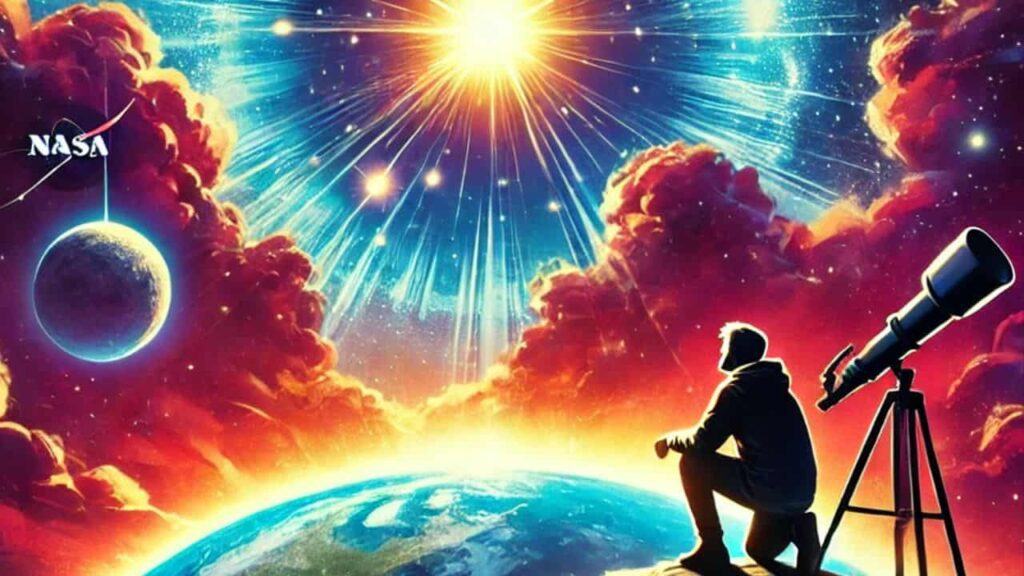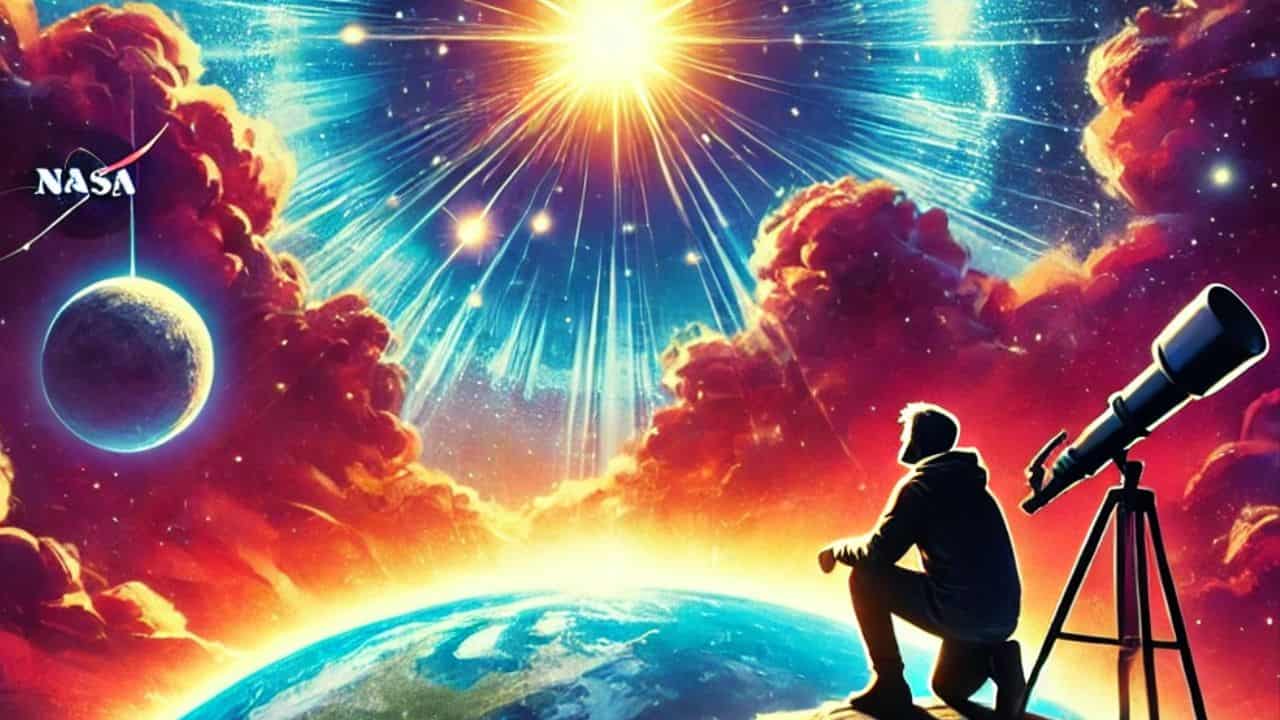NASA, nova explosion, T Coronae Borealis, Blaze Star, amateur astronomers, professional astronomers, Corona Borealis, nova event, night sky, astronomical events, 2024 nova, stargazing, binary star system, white dwarf, red giant
Discover the excitement surrounding the rare nova explosion of T Coronae Borealis, also known as the Blaze Star. NASA and global astronomers prepare to witness this once-in-a-lifetime event visible to the naked eye. Learn about the significance, history, and how to observe this spectacular celestial phenomenon in the Northern Crown constellation

NASA and Global Astronomers Await Rare Nova Explosion
This summer, professional and amateur astronomers around the globe are eagerly anticipating a remarkable celestial event that promises to illuminate the night sky. The focus is on a seemingly inconspicuous spot within the constellation Corona Borealis, also known as the “Northern Crown.” This area will soon be the stage for a nova explosion so bright that it will be visible to the naked eye from Earth.
A Cosmic Spectacle in the Making
Dr. Rebekah Hounsell, an assistant research scientist at NASA’s Goddard Space Flight Center in Greenbelt, Maryland, highlights the significance of this event. “It’s a once-in-a-lifetime event that will create a lot of new astronomers out there, giving young people a cosmic event they can observe for themselves, ask their own questions, and collect their own data,” she explains. “It’ll fuel the next generation of scientists.”
The focal point of this excitement is T Coronae Borealis, known to astronomers as “T CrB” or the “Blaze Star.” Located approximately 3,000 light-years from Earth, this binary system comprises a white dwarf and a red giant. The white dwarf, an Earth-sized remnant of a dead star with a mass comparable to our Sun, is gradually siphoning hydrogen from its red giant companion.
As hydrogen accumulates on the white dwarf’s surface, it leads to a build-up of pressure and heat. This eventually triggers a thermonuclear explosion that expels the accreted material into space in a blinding flash. Unlike supernovae, which destroy their host stars, a nova explosion leaves the white dwarf intact, allowing the cycle to repeat over tens or hundreds of thousands of years.
Anticipating the Next Outburst
Historically, T CrB has exhibited nova eruptions approximately every 80 years. The last recorded event was in 1946, and current observations suggest that the next outburst could occur by September 2024. If this pattern holds, it will provide an extraordinary opportunity for astronomers to study a relatively nearby nova event in real-time.
The first documented sighting of T CrB dates back to 1217, when Burchard, abbot of Ursberg, Germany, noted a “faint star that for a time shone with great light.” Since then, astronomers have eagerly awaited each subsequent eruption, with the most recent occurring in the mid-20th century.
Locating T Coronae Borealis
For those keen on witnessing this event, finding T CrB in the night sky is relatively straightforward. The Northern Crown, a horseshoe-shaped constellation located west of Hercules, can be identified by locating the two brightest stars in the Northern Hemisphere – Arcturus and Vega. A straight line drawn between these stars will lead observers to Hercules and then to the distinct pattern of Corona Borealis.
Once the nova erupts, it will be visible to the naked eye for less than a week. However, the spectacle promises to be unforgettable, offering a rare glimpse into the dynamic processes of our universe.
A Collaborative Scientific Endeavor
Dr. Elizabeth Hays, chief of the Astroparticle Physics Laboratory at NASA Goddard, underscores the importance of community involvement in observing such events. “Citizen scientists and space enthusiasts are always looking for those strong, bright signals that identify nova events and other phenomena,” she says. “Using social media and email, they’ll send out instant alerts, and the flag goes up. We’re counting on that global community interaction again with T CrB.”
NASA’s Fermi Gamma-ray Space Telescope, operational since 2008, will be among the instruments poised to observe T CrB’s nova explosion. Additionally, other space-based missions, including NASA’s James Webb Space Telescope, Neil Gehrels Swift Observatory, IXPE (Imaging X-ray Polarimetry Explorer), NuSTAR (Nuclear Spectroscopic Telescope Array), NICER (Neutron star Interior Composition Explorer), and the European Space Agency’s INTEGRAL (Extreme Universe Surveyor), will also participate. Ground-based telescopes, such as the National Radio Astronomy Observatory’s Very Large Array in New Mexico, will complement these observations by capturing data across the visible and non-visible light spectrum.
Harnessing the Power of Citizen Science
The role of amateur astronomers and citizen scientists is pivotal in such large-scale observational campaigns. As Dr. Hounsell explains, “We’ll observe the nova event at its peak and through its decline, as the visible energy of the outburst fades. But it’s equally critical to obtain data during the early rise to eruption – so the data collected by those avid citizen scientists on the lookout now for the nova will contribute dramatically to our findings.”
This collaborative approach will enable scientists to gather comprehensive data, providing valuable insights into the structure and dynamics of recurring stellar explosions. Dr. Hays adds, “Typically, nova events are so faint and far away that it’s hard to clearly identify where the erupting energy is concentrated. This one will be really close, with a lot of eyes on it, studying the various wavelengths and hopefully giving us data to start unlocking the structure and specific processes involved. We can’t wait to get the full picture of what’s going on.”
New Tools for a New Era of Astronomy
The technological advancements since the last T CrB eruption in 1946 are significant. For instance, gamma-ray imagers and IXPE’s polarization capability, which determines the structure and internal processes of high-energy phenomena, offer unprecedented insights into such events. By combining data from these advanced instruments, researchers hope to uncover new information about the lifecycles of binary systems and the powerful stellar processes driving them.
However, the unpredictability of recurrent novae adds an element of suspense. As Dr. Koji Mukai, an astrophysics researcher at NASA Goddard, notes, “Recurrent novae are unpredictable and contrarian. When you think there can’t possibly be a reason they follow a certain set pattern, they do – and as soon as you start to rely on them repeating the same pattern, they deviate from it completely. We’ll see how T CrB behaves.”
Looking Ahead
As we approach the potential nova eruption of T CrB, the excitement among astronomers and space enthusiasts continues to build. This event not only promises a spectacular visual display but also offers a unique opportunity to advance our understanding of stellar phenomena.
The anticipation and preparation for this nova explosion underscore the collaborative nature of modern astronomy, where professional researchers and amateur stargazers alike contribute to our knowledge of the universe. By observing and studying events like the T CrB eruption, we continue to unlock the mysteries of the cosmos, inspiring future generations of scientists and explorers.
Read More
- NASA Voyager 1 Resumes Science Operations: Exploring Interstellar Space
- Boeing Starliner Prepares for June 22 Return: Key Milestone for NASA Space Program
- NASA Milestone Spacewalk 90: A Leap Forward in Space Exploration
- NASA Prepares for Crucial Spacewalks to Repair and Upgrade International Space Station










